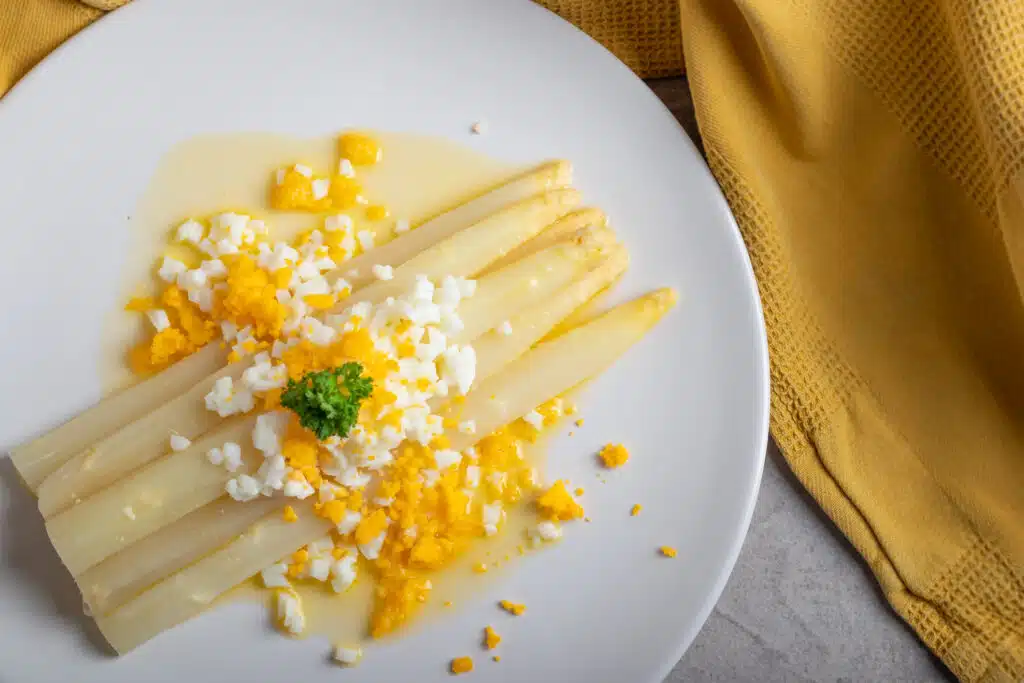It’s the season for Dutch white asparagus. Their nickname is the ‘white gold’ and are available, roughly, between April and June. It is the same vegetable as the green asparagus but is grown under the soil and covered so that they remain white due to the absence of sunlight. This makes them juicier, sweeter and more flavorful than the green asparagus. The thicker the higher the quality is and they are rated accordingly from A to AAA. To test their freshness you rub two off them against each other and that should produce a bit of a squeaky sound.
The asparagus is grown in ‘poor sandy soil’ , in The Netherlands that means mostly in the South-East like the provinces of Noord-Brabant and Limburg. Around 25% of our country is below sea level with muddy and wet ‘polders’ all around and therefore is not suitable to grow them. But no worries, that is the area where we keep our cows to make our beautiful cheese.
Although cultivation only really started after the Second World War, the white asparagus is often displayed in Dutch still lifes from the 17th century and you can probably imagine what they symbolise…
The white asparagus can be prepared in many ways. The most classic version is boiled or steamed and served with chopped, hard boiled eggs, ham, melted butter and nutmeg. Also sauces like sauce Hollandaise or Bearnaise go really well with them. In the Netherlands it is a traditional gastropub dish and high-end restaurants also serve them when in season.
We can only think of one ‘smelly’ disadvantage of white asparagus, although not everyone suffers from it. But you’ll find out yourself once you have enjoyed them at one of these places in Amsterdam:
- Hemelse modder (check their festive menu)
- Restaurant de Belhamel
- Café Restaurant Amsterdam
- Proeflokaal Van Wees

